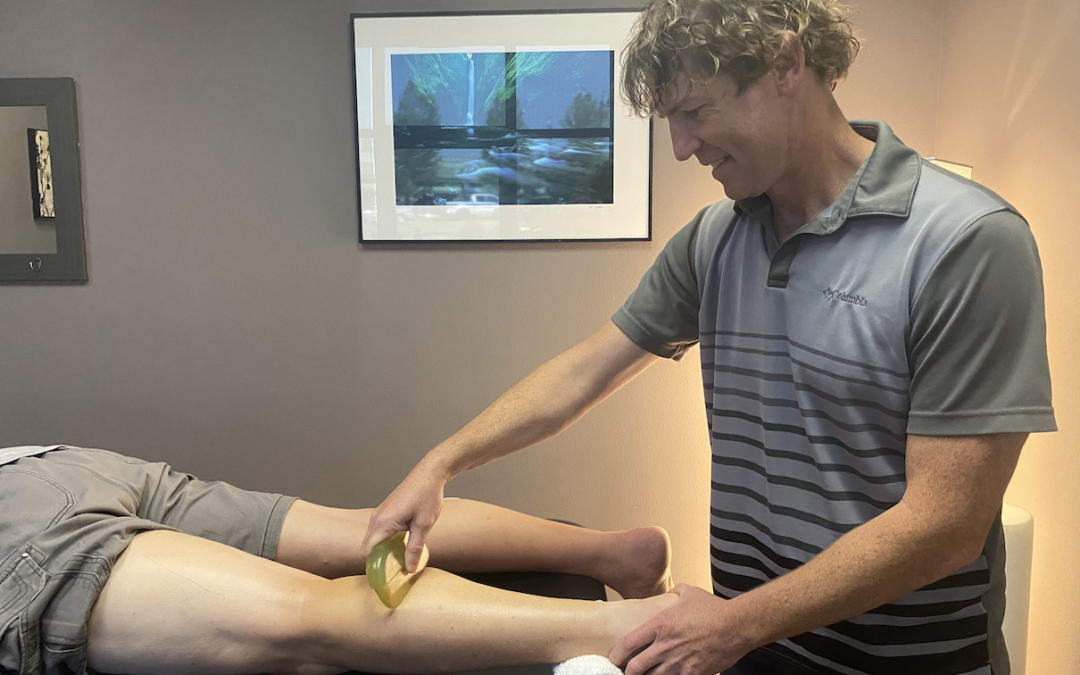Michelle has been a distance runner for much of her life. And now, at 50, she is acutely aware of the slow deterioration of her body, something she intends to fight to maintain her active lifestyle. She eats a healthy diet, meditates, and exercises daily. But despite the work, her running has come to a screeching halt. That is until she learned of a treatment for her Achilles tendinopathy from her physical therapist, Scott Weber, of Alpine Physical Therapy.
Scott has been a physical therapist since 1998 and has a variety of tools in his “PT tool belt.” In his tool belt, Scott uses various modalities and picks and chooses the best one depending on his patient’s challenges. One such modality is a treatment called IASTM, and he typically pulls this one out for chronic conditions, such as tendinopathy. He began incorporating this treatment after about ten years in practice.
“I had varied results treating chronic issues in the past, but since starting IASTM in conjunction with stretching and eccentric loading, my confidence level is significantly higher, and I’ve had significantly improved results,” said Scott.
What is IASTM?
IASTM, which stands for Instrument Assisted Soft Tissue Mobilization, is known to the layman as “scraping,” but the treatment – especially under Scott’s gentler touch – is much more than that. Damage to the body’s soft tissue – including the muscles, tendons, ligaments, and fascia, as seen in conditions such as tendinopathy can result in swelling, pain, and a loss of mobility. All of which can lead to adhesions within the tissue. IASTM is a gentle passing of the tools over the tissue, which helps break up these adhesions and stimulates an inflammatory response within the body. All of which leads to tissue healing and remodeling.
Specific to tendinopathy, the tissue fibers aren’t oriented in the correct direction. Their irregular matrix results from the body not healing the injury or dysfunction correctly or because the tissue hasn’t remodeled the right way over time. The gentle scraping of IASTM stimulates the body to remove the fibers that are in an irregular matrix and heal properly. Combining IASTM with stretching and eccentric loading causes the tissue to remodel and line up correctly.
“A lot of tendinopathy cases are the result of repetitive stress over many years that lead to degeneration of the tissue,” said Scott.
And IASTM is one such treatment that can make a difference – even after years of degeneration, which is excellent news for people like Michelle.
The typical treatment length is 6-8 visits for maximum benefit. Scott begins the visit by having his patients do a bit of a warm-up to get the blood flowing. He then introduces IASTM to the entire extremity that is affected. He does this because the whole area can benefit from the treatment. The next step is to move to some stretching and strengthening exercises for any muscles that have been determined to be weak in the global region being treated. Scott also likes to incorporate eccentric loading exercises, as they’ve been proven to be the best way to load degenerated tissue. Hence, the fibers remodel and heal to look more like healthier tissue.
Scott’s treatment regimen works. Ask Michelle if you don’t believe us. She’s back to running and gearing up and is feeling stronger than ever.
